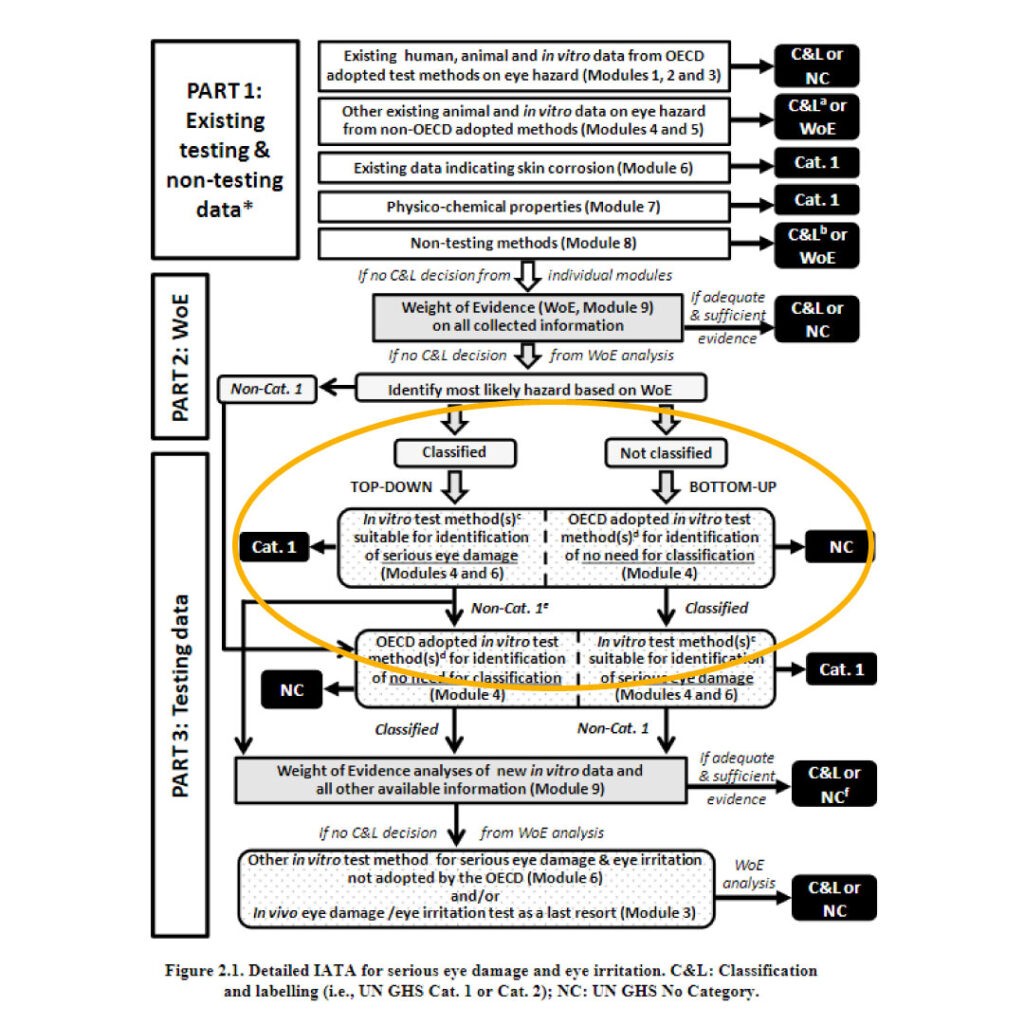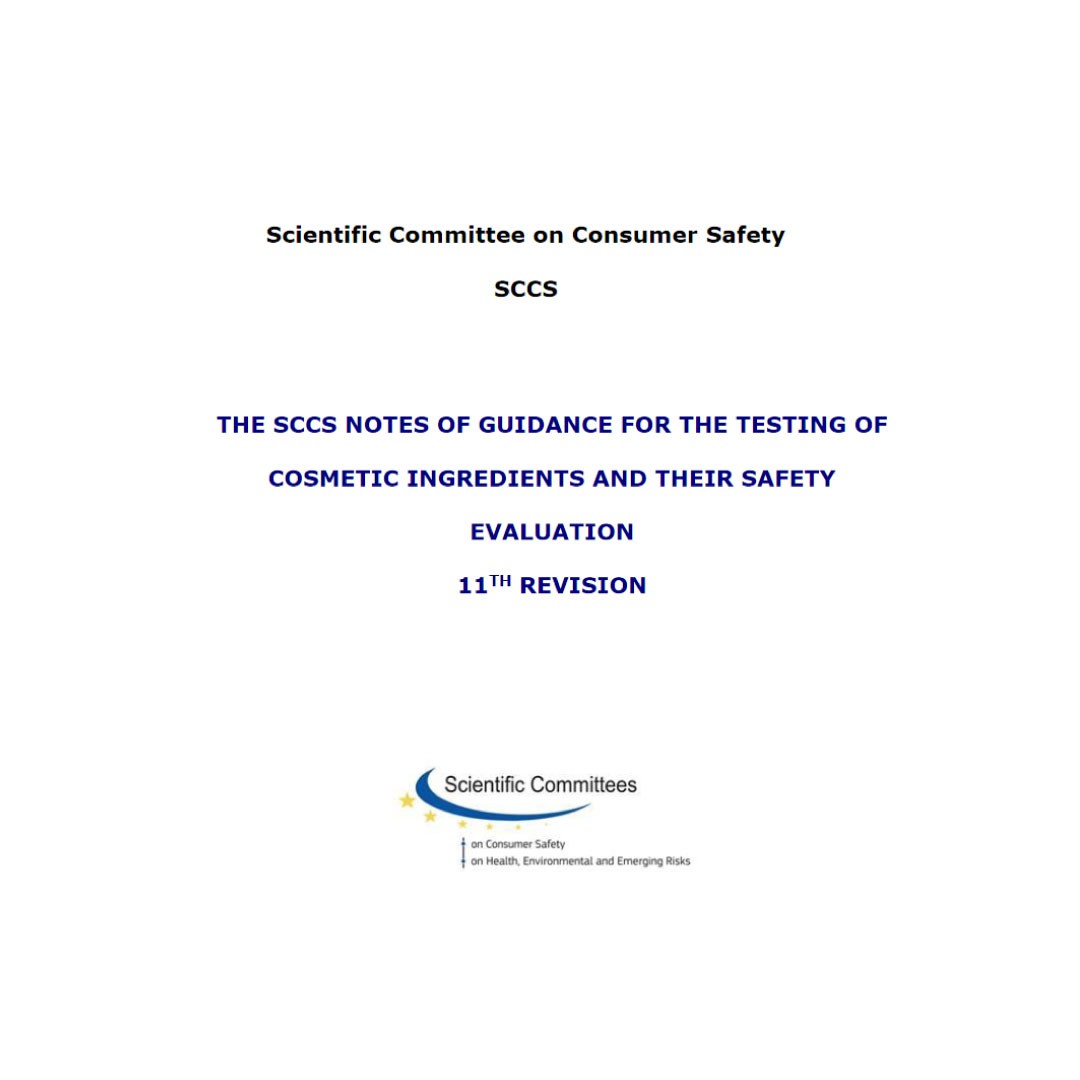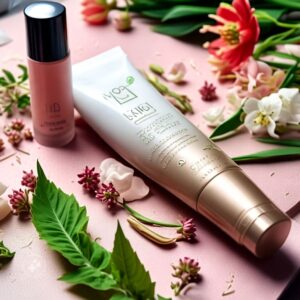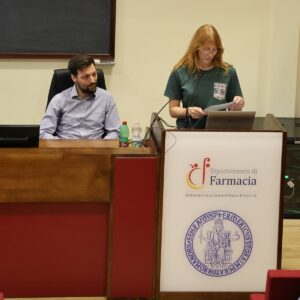100% in chemico & animal free
As mentioned in the recent SCCS XI, the 11th revision of the “Guidance Notes for the Testing of Cosmetic Ingredients and the Evaluation of their Safety”, in paragraph 3–4.6, when talking about New Approach Methodologies (NAMs) for serious eye damage and eye irritation:
TG OECD 492 uses a RhCE tissue model based on a human tissue culture.
TG OECD 491 uses a rabbit corneal cell line.
TG OECD 437 and 438 use eyes collected from chickens and bovines obtained from slaughterhouses.
TG OECD 460 makes use of kidney cells.
Only Ocular Irritection® OECD TG 496 is completely, 100%, animal free.

Paragraph 3-4.6 of SCCS XI
The test
In fact, Ocular Irritection® is based on the knowledge that the ability of a chemical to irritate the cornea is related to its propensity to promote the denaturation and destruction of corneal proteins.
The Assay System mimics these biochemical phenomena by using a protein reagent in chemico.
When the assay is performed, the changes in protein structure induced by the test sample are then quantified by measuring the resulting changes in turbidity (optical density) of the solution reagent at a wavelength of 405 nm using a spectrometer.
The results of past comparative studies were used to develop what is called an “Irritection Draize Equivalent” (IDE) score, which is a value derived from in vitrostudies that is equivalent to the expected irritation potential in vivo (Draize rabbit eye test).
Recommended by the OECD as a first test for both Bottom-Up and Top-Down strategy
Ocular Irritection®, when used by itself, is the first and only step in a top-down or bottom-up strategy for, respectively, the classification of substances that cause severe ocular damage (UN GHS Category 1) and that do not require classification (UN GHS No Category).
The SCCS XI, in addition to the guidance document OECD 263, mentions the use of Ocular Irritection® even if the test substance is not UN Cat.1 or No Cat.: the top-down or bottom-up approach of OI® becomes part of an integrated strategy (IATA – Integrated Approach on Testing and Assesment) and one of the many steps to take within it.






